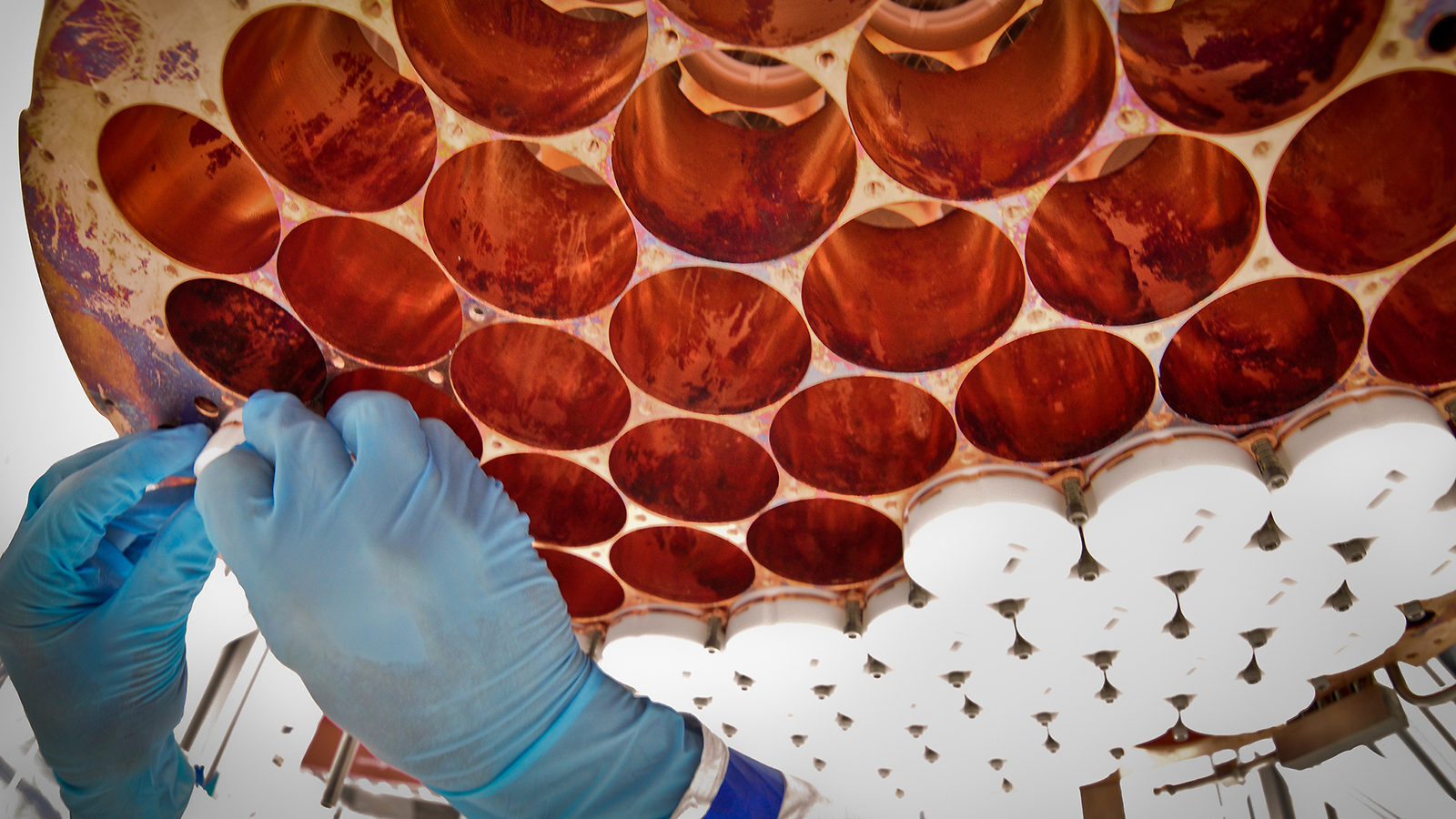The Large Underground Xenon dark matter experiment, which operates nearly a mile underground at the Sanford Underground Research Facility in the Black Hills of South Dakota, has already proven itself to be the most sensitive dark matter detector in the world. Now scientists have significantly enhanced its ability to look for WIMPs, or weakly interacting massive particles, which are among the leading candidates for dark matter.
The new research, which re-examines data collected during LUX’s first run in 2013, helps to rule out the possibility of dark matter detections at low-mass ranges, where other experiments had previously reported potential hints of dark matter. It is described in a paper submitted to Physical Review Letters.
“We have long thought that LUX should have good sensitivity to low-mass WIMPs, but only with this new analysis are we for the first time fully taking advantage of that,” says LUX co-founder Tom Shutt of the Department of Energy’s SLAC National Accelerator Laboratory.
Searching for dark matter deep underground
Dark matter is thought to be the dominant form of matter in the universe. Scientists know it exists because its gravity affects the way galaxies rotate and the way light bends as it travels through the universe. WIMPs are thought to interact with other matter only on very rare occasions; they have so far evaded detection.
LUX consists of one-third of a ton of liquid xenon surrounded by sensitive light detectors and is designed to detect collisions of dark matter particles with xenon atoms. When this happens, the xenon will recoil and emit a faint flash of light, which is detected by the light sensors. The detector’s location at Sanford Lab beneath a mile of rock helps to shield it from cosmic rays and other radiation that would interfere with a dark matter signal.
LUX has yet to detect a dark matter signal, but its exquisite sensitivity has allowed scientists to rule out a vast range of properties WIMPs could have potentially had. New calibration techniques described in the paper increase that sensitivity even further, particularly for low WIMP masses.
Making the search more sensitive
LUX scientists calibrated their detector using neutrons as stand-ins for dark matter particles. Bouncing neutrons off the xenon atoms allows scientists to quantify how the LUX detector responds to the recoiling process.
By temporarily injecting radioactive gases into the detector, LUX scientists also calibrated the detector response to the deposition of small amounts of energy by struck atomic electrons.
“It is vital that we continue to push the capabilities of our detector in the search for the elusive dark matter particles,” says LUX co-spokesperson Rick Gaitskell of Brown University.
At SLAC, Tomasz Biesiadzinski helped develop tools to better quantify signals from the light sensors, making measurements of events in the LUX detector more accurate. Wing To co-led the statistical sensitivity and limits analysis, which allows scientists to exclude various WIMP models with the LUX data.
These improvements, coupled with advanced computer simulations at Lawrence Berkeley National Laboratory and Brown University, allowed scientists to test additional particle models of dark matter that can now be excluded from the search.
“[LUX scientists] have done really important work understanding their calibration at their lowest energies,” says University of Minnesota physicist Priscilla Cushman of the SuperCDMS dark matter experiment. “In the areas in which [LUX and SuperCDMS] overlap, it's important that we have complementary targets. We're all in this business together, so we're very happy they have extended their reach.”
Preparing for future searches
The latest run began in late 2014 and is expected to continue until June 2016. “We will be very excited to see if any dark matter particles have shown themselves in the new data,” says LUX co-spokesperson Dan McKinsey of the University of California, Berkeley.
Planning for the next-generation dark matter experiment at Sanford Lab is already underway. In late 2016, LUX will be decommissioned to make way for the much larger xenon detector of the LUX-ZEPLIN, or LZ, experiment, which will be filled with 10 tons of liquid xenon, about 30 times the volume used for LUX.
“All of LZ’s xenon will be purified at SLAC,” says Dan Akerib, who leads SLAC’s LZ team with Shutt. “We’re working on a purification system that will be 20 times faster and produce 100 times purer liquid xenon than the one used for LUX.”
In addition, SLAC has begun assembling a prototype for the LZ detector, which will be 100 times more sensitive to elusive WIMPs compared to LUX.
The LUX scientific collaboration, which is supported by the DOE and National Science Foundation, includes 19 research universities and national laboratories in the United States, the United Kingdom and Portugal.
Note: This article is based on a press release from Sanford Underground Research Facility.



